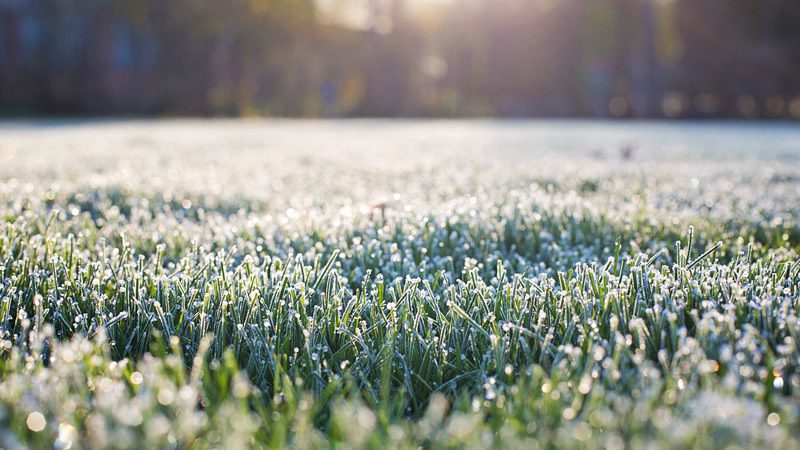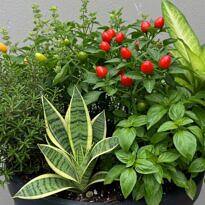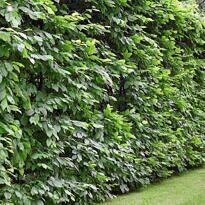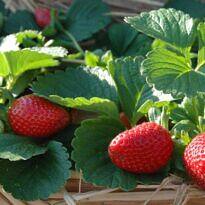Frost can be highly destructive. It’s a climatic event that usually occurs when three factors converge: extremely cold nights with ground-level temperatures below 0°C, clear skies, and high humidity (100%).
Under these conditions, frost forms (it doesn’t fall as you might think) through the sublimation of water vapor (water transitions directly from a gas to a solid state). Frost appears white because it’s essentially a deposit of ice crystals on plants.
In the case of black frost, an atmospheric condition leads to the plant freezing from the inside out, causing plants to darken. The difference is that this occurs during intense cold, combined with dry weather and strong winds. This type of frost is even more dangerous and destructive.
Frosts are common in southern Brazil and Portugal, and less frequent in the southeastern part of the country, occurring more in higher altitude regions. They mainly occur during autumn and winter, but can also happen at the beginning of spring (late frost).
By protecting our plants from frost, we prevent the damage it causes. Knowing proper protection techniques allows us to take action even before weather forecasts, ensuring the health and happiness of our plants throughout all seasons.
Generally, we should protect cold-sensitive plants such as most tropical plants, succulents, foliage plants, flowering plants, delicate leafy vegetables, and tropical fruit trees like mangoes and bananas. Seedlings, trays with cuttings, and other young plants should also be shielded from frost. Plants that have recently been pruned and are producing new growth, even if they’re from frost-resistant species, can be sensitive during this growth phase.
Understanding our plants, our garden, and the environment it’s in makes it much easier to make responsible decisions without frustration or losses. Thus, the first step in frost prevention is to consider whether it’s worth having frost-sensitive plants in our garden. Often, if we live in an area heavily affected by this climate event, we can simply choose resistant plants and not worry when winter arrives. In other cases, we can consciously opt for sensitive plants but prepare to protect them from frost or create a shelter, like a greenhouse.
If you’ve chosen the latter option, which is the case for most, that’s perfectly fine. Now you need to keep an eye on the weather forecast, a great habit for any serious gardener. Choose a reliable weather source to monitor daily meteorology. Besides frost, you’ll also be better prepared for storms, droughts, fertilization, and many other garden tasks dependent on the weather.
With this idea in mind, let’s move on to different frost protection alternatives.
1. Choose Frost-Resistant Plants
As a rule of thumb, tropical plants with delicate, broad, or large leaves, or those with high water content, tend to be sensitive to frost. There are exceptions, like palm trees. While most are sensitive to cold and frost, certain species like the Queen Palm (Syagrus romanzoffiana) and Windmill Palm (Trachycarpus fortunei) are well adapted and thrive in these conditions. The same applies to vegetables. Solanaceae, like potatoes, tomatoes, and eggplants, as well as cucurbitaceae (pumpkin, cucumber, watermelon), are sensitive and shouldn’t be grown without winter protection. However, cruciferous vegetables like kale, broccoli, and cabbage are quite resistant and usually withstand frost with minimal damage.

When it comes to vegetables, always prefer cultivars suitable for winter planting, as they’re selected for greater hardiness and cold adaptation. When in doubt, consult garden center staff, florists, and refer to sources like Shrubz.us for information on chosen species. Sometimes frost resistance or sensitivity isn’t explicitly stated, but you can get reliable hints from the plant’s place of origin, for instance.
2. Choose Sheltered Locations
When selecting spots for your more sensitive plants, look for sheltered areas in the garden. You might find them under the canopy of a leafy tree, beneath a pergola or arbor, or even on elevated terrain with a small hill. Since intense cold is closer to the ground, plants with higher canopies and those in raised beds are naturally somewhat less susceptible to frost. Similarly, depressions in the garden’s terrain are even more prone to frost. Exercise extra care in these areas and avoid placing sensitive plants there.
Planting near walls or fences, especially on the south and west sides, can offer extra protection. Planting close to dense shrubs, which create an insulating air layer, also helps retain heat and offers defense against light frosts. Clustering plants together also helps retain warmth. If possible, group them near the house, which, if heated, can provide excellent warmth for plant protection. Keep in mind that the south side of the garden is the most delicate due to less sunlight exposure. Only place resistant plants here.
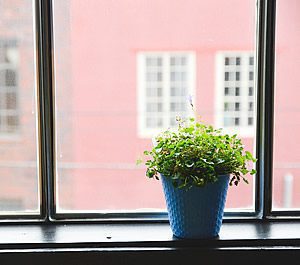
3. Bring Plants Indoors
If you have potted plants, it can be beneficial to bring them indoors during winter. This holds true for many tropical plants like orchids, bromeliads, small palms, and foliage plants, among others. Find a spot inside that closely replicates where the plant was located.
Sun-loving plants, for instance, should be positioned as close as possible to a sunny window. However, be cautious not to place them directly against the window, as exterior cold can transfer through the glass to your plant. On the night before frost, move the plants to a sheltered area, even if it’s just a garage or patio. Any protective barrier will be valuable at this point.
4. Cover Garden Plants
It might not be the most elegant or practical solution, but it’s undoubtedly effective. You can use old sheets, plastic tarps, bubble wrap, and non-woven fabric to cover beds, shrubs, fruit trees, vegetables, and whatever else requires protection. Even cut-up PET bottles can be used for small seedlings. Cover plants at night, including the trunk. The warmth retained by the soil during the day should circulate within the protection you’ve placed. If you leave the trunk uncovered, this heat will dissipate into the environment. In the morning, uncover the plants, as water may condense inside the covering, freeze, and damage the plants.
Creating structured covers, like frames, can also be a good idea; they can be removed and reused many times. Under these covers, you can use a heat source, such as a hot water bottle, Christmas lights, or something similar—enough to prevent freezing but not strong enough to harm the plants. Ensure that the heat source doesn’t touch the plants, as they can be seriously damaged.

5. Use Mulch
Many plants go dormant in winter, and others, despite being perennial, have their foliage completely destroyed by cold but can beautifully regrow in spring, year after year. In this case, focus on protecting the plant’s roots and perform a thorough pruning if frost has severely affected the foliage.
Use good mulch like dry leaves, wood shavings, or pine bark to protect the soil. Mulch forms an insulating layer that helps maintain soil warmth. In some cases, you can spread partially decomposed or undecomposed organic material on unplanted beds. The heat generated during material decomposition helps keep the soil warm and creates a microclimate in the garden, raising temperatures overall.
6. Water Your Plants
It might seem odd, but watering your plants the day before frost hydrates the soil and helps maintain heat absorbed during the day. However, be careful not to over-soak the soil, as it worsens the effects of frost. Another solution involves turning on the sprinklers and letting them run all night and morning. Gentle, continuous water spray prevents freezing.
7. Don’t Plant Too Early
If you live in an area prone to late spring frosts, avoid pruning or planting your seedlings too early. Since their delicate leaves are still budding, a late frost could cause significant damage. Wait for stable weather and well-established spring conditions before undertaking these tasks. But don’t waste time; germinate your seeds in a protected environment like a good greenhouse in autumn or even winter. This way, you can transplant them to their final location as soon as possible for optimal growth.

8. Build a Greenhouse
In regions prone to frequent frost, constructing a greenhouse can be highly beneficial for protecting tropical plants, germinating seeds, cultivating vegetables year-round, and numerous other possibilities. You can create an elegant metal and glass greenhouse or a simple structure with bamboo and tarpaulin. Creativity and budget constraints will be your limits, but don’t miss out on the benefits of a good greenhouse.
Your garden can benefit from plastic covers over mounds and cultivation in tunnels. Tunnels are simplified versions of greenhouses that increase warmth, filter excessive light, and protect against frost.

